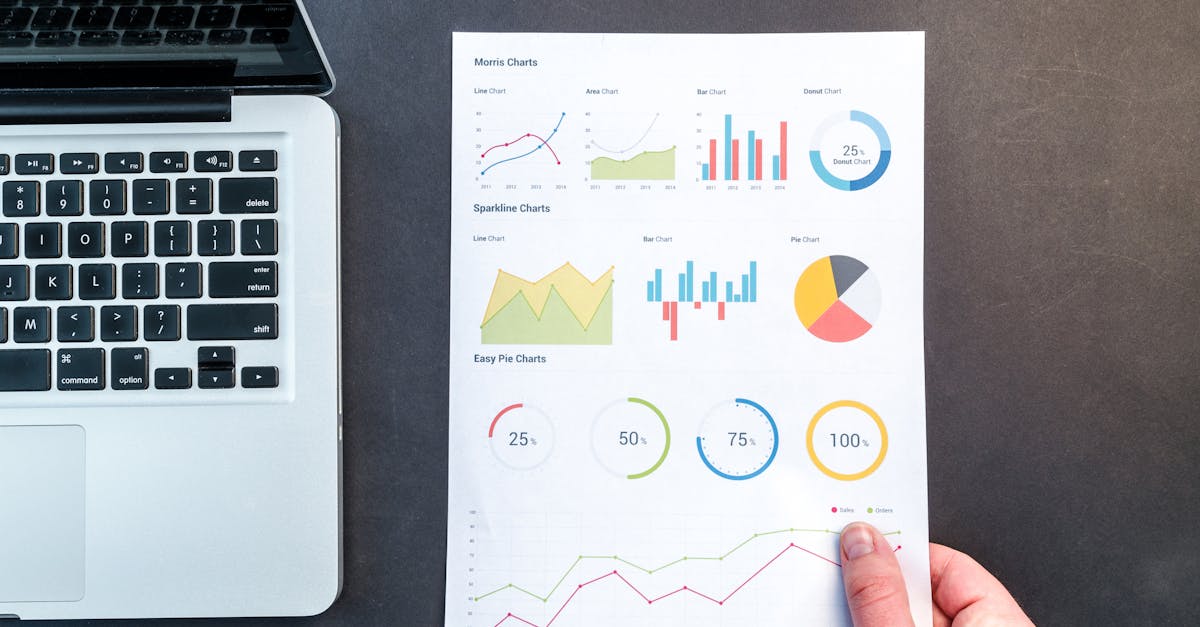
Table Of Contents
Use Cases of Reports
Organisations across industries rely on reports to gain valuable insights into their operations. Analytics and Reporting Queensland offers a range of tools for businesses to track key metrics and performance indicators. These reports are vital for decision-making processes, enabling companies to identify trends, monitor progress, and make informed choices to enhance their strategies. Real-world applications of reports include financial statements, sales performance summaries, and marketing campaign analyses, among others. Through detailed reports, businesses can evaluate the effectiveness of their efforts and adapt their approaches for optimal results.
Reports play a fundamental role in providing a comprehensive overview of a business's performance. Analytics and Reporting Queensland emphasises the importance of customised reports tailored to the specific needs of each organisation. These reports serve as a reference point for businesses to assess their current standing, set achievable goals, and measure success against predefined benchmarks. From tracking sales figures to evaluating customer satisfaction levels, reports offer a detailed snapshot of a company's operations, enabling stakeholders to make strategic decisions based on data-driven insights.
Realworld Applications of Reports
In practical terms, reports have a myriad of real-world applications for businesses. They offer a comprehensive snapshot of the company's performance and can be used to identify trends, patterns, and areas requiring improvement. Analytics and Reporting Caboolture, Queensland play a pivotal role in informing decision-making processes, allowing companies to make data-driven choices that can drive growth and foster success. By leveraging reports, businesses can gain valuable insights into their operations, customer behaviour, and market trends, enabling them to formulate strategic plans for the future.
Reports are instrumental in various aspects of business operations, from tracking key performance indicators (KPIs) to monitoring financial health and assessing marketing campaigns. Analytics and Reporting Caboolture, Queensland equip companies with the necessary tools to evaluate their progress against predefined goals and objectives. Through detailed reports, organisations can gauge the effectiveness of their strategies, allocate resources efficiently, and adapt to changing market conditions. Ultimately, reports serve as a cornerstone for informed decision-making, enabling businesses to stay competitive and agile in today's fast-paced business environment.
Use Cases of Analytics
Organisations worldwide utilise analytics to delve deep into their data, extracting valuable insights to enhance decision-making processes. Analytics and Reporting Queensland plays a pivotal role in this domain, offering solutions that empower businesses to uncover patterns, trends, and correlations within their datasets. By harnessing the power of analytics, companies can gain a competitive edge by identifying opportunities for growth, predicting future outcomes, and mitigating potential risks.
Analytics and Reporting Queensland supports businesses across various sectors, from finance to healthcare, by providing advanced analytical tools that drive strategic initiatives. Through sophisticated algorithms and data visualisations, companies can streamline operations, improve customer experiences, and optimise resource allocation. Whether it's identifying customer preferences or predicting market trends, analytics serves as a cornerstone for informed decision-making, guiding organisations towards sustainable growth and success.
Practical Implementations of Analytics
When it comes to practical implementations of analytics, Analytics and Reporting Queensland focuses on driving data-driven decisions within organisations. One common application is in identifying trends, patterns, and correlations within large datasets to extract meaningful insights. By utilising advanced analytics tools, businesses can uncover hidden opportunities or potential risks that may have otherwise gone unnoticed.
Moreover, Analytics and Reporting Queensland emphasise the importance of predictive analytics in forecasting future trends and outcomes. By analysing historical data trends and applying statistical algorithms, businesses can make informed decisions about future strategies and initiatives. This proactive approach enables organisations to stay ahead of the curve and adapt to changing market conditions with confidence.
Key Metrics in Reports
Key Metrics in Reports
Analytics and Reporting Sunshine Coast, Queensland play a vital role in business operations and decision-making processes. When it comes to reports, key metrics serve as the backbone of insights and understanding. These metrics encompass essential data points that offer a glimpse into the performance and trends within an organisation. From financial data such as revenue and expenses to operational statistics like customer acquisition and retention rates, reports help stakeholders assess the health and success of their business.
Moreover, Key Metrics in Reports also include qualitative information that provides context to quantitative data. Customer feedback, employee satisfaction scores, and market research insights can offer valuable perspectives that numerical data alone may not encompass. By combining both quantitative and qualitative metrics, reports can offer a comprehensive view of various aspects of a business, facilitating informed decision-making and strategic planning.
Essential Data Points to Include in Reports
When creating reports for analysis, it is crucial to include essential data points that provide a comprehensive overview of the subject matter. In Analytics and Reporting Caboolture, Queensland, key data points to consider encompass numerical figures such as sales revenue, expenses, profit margins, and market trends. These quantitative metrics offer a clear snapshot of the financial health and performance of a business or organisation.
Moreover, qualitative data points such as customer feedback, employee surveys, and market sentiment are equally imperative in shedding light on the human aspect of the business. Including these insights in reports allows for a more holistic understanding of the factors influencing business operations. By combining both quantitative and qualitative data points, reports can offer a well-rounded perspective that aids in making informed decisions and shaping strategic initiatives.
FAQS
What is the main difference between reports and analytics?
Reports typically provide a summary of historical data or information, while analytics involve the process of analyzing data to derive insights, make predictions, and drive decision-making.
How do reports and analytics differ in terms of use cases?
Reports are commonly used to present data in a structured format for easy consumption, while analytics are utilized to uncover trends, patterns, and correlations within the data to support strategic decision-making.
Can you provide an example of a real-world application of reports?
Real-world applications of reports include financial statements, sales reports, performance reviews, and market research summaries, all of which aim to provide a snapshot of past activities or outcomes.
What are practical implementations of analytics in business settings?
Analytics are often implemented in business settings to optimize processes, improve customer experience, enhance marketing strategies, predict trends, and identify potential risks or opportunities based on data analysis.
What are some key metrics commonly found in reports?
Key metrics in reports may include revenue, expenses, profit margins, customer acquisition costs, conversion rates, market share, and inventory levels, among others.
What are essential data points to include in reports for effective decision-making?
Essential data points to include in reports for effective decision-making may consist of historical trends, comparative analysis, key performance indicators (KPIs), benchmarks, forecasts, and actionable insights derived from the data analysis.


